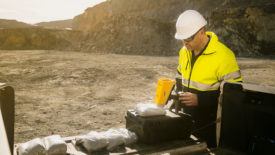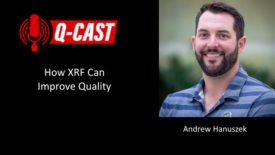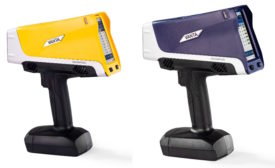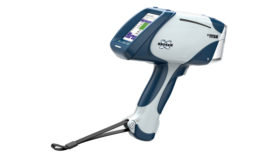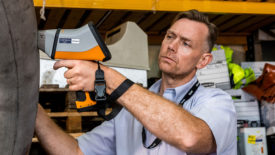Home » Keywords: » XRF analysis
Items Tagged with 'XRF analysis'
ARTICLES
NDT | XRF
Uncover heavy metals, flame retardants, and phthalates with handheld XRF & FT-IR spectroscopy.
Read More
NDT
Enhancing Material Analysis: The Role of XRF and LIBS in Nondestructive Testing
Enhancing NDT Applications with XRF and LIBS Technologies
February 27, 2025
XRF
Achieve RoHS Compliance: Uncover Heavy Metals, Flame Retardants, and Phthalates with Handheld XRF & FT-IR Spectroscopy
Many manufacturers have incorporated handheld XRF and FT-IR testing into their workflows to ensure regulatory compliance.
February 21, 2025
NDT | XRF
Combining X-ray Fluorescence, Infrared Spectroscopy and Software Algorithms for Positive Material and Contaminant Identification
In an ideal situation, every contaminant and raw material would have its own XRF and FTIR spectrum, which can be used to compare to unknown contaminants or incoming materials.
September 11, 2024
NDT | XRF
Ensuring the Quality of Lithium Ion Battery Manufacturing Amid Surging Demand
As the demand for Li-ion batteries continues to rise, efficient manufacturing and recycling practices become imperative.
July 11, 2024
NDT | XRF
From Lab to Line: Evolution of XRF in Manufacturing Quality Assurance and Control
The versatility of XRF technology extends across a wide range of industries, including automotive, aerospace, electronics, pharmaceuticals, and more.
May 15, 2024
New Product
Evident Scientific Next-Generation Vanta Handheld XRF Analyzers
January 23, 2024
NDT | PMI Part 3
Evolution of PMI Technology: Advancements in Handheld XRF Propel Accuracy, Connectivity, and Efficiency
The suite of tools available for PMI has grown.
October 13, 2023
NDT | PMI Part 2
On-Site and Real-Time PMI Testing: Faster Decisions, Enhanced Productivity, and Cost Savings
Learn more about the advantages of positive material identification (PMI) testing.
October 12, 2023
Stay in the know with Quality’s comprehensive coverage of
the manufacturing and metrology industries.
eNewsletter | Website | eMagazine
JOIN TODAY!Copyright ©2025. All Rights Reserved BNP Media.
Design, CMS, Hosting & Web Development :: ePublishing





